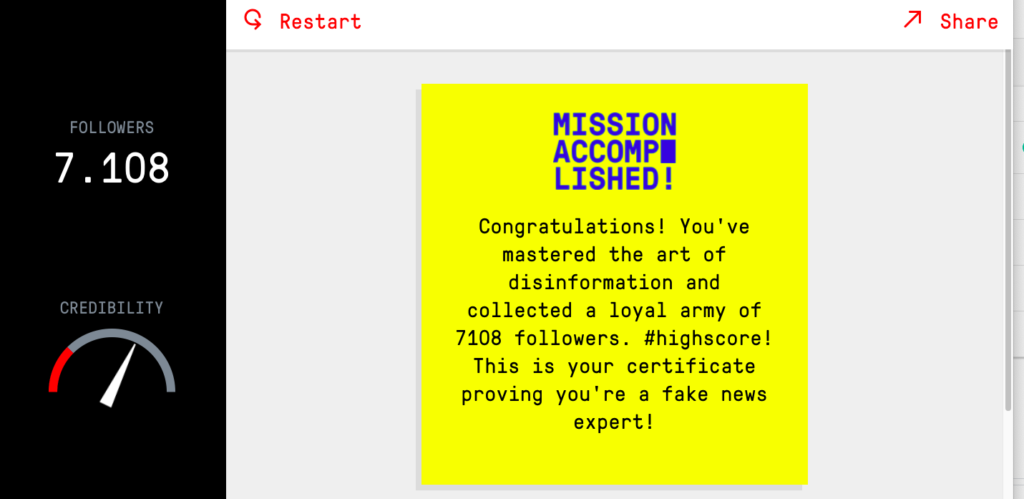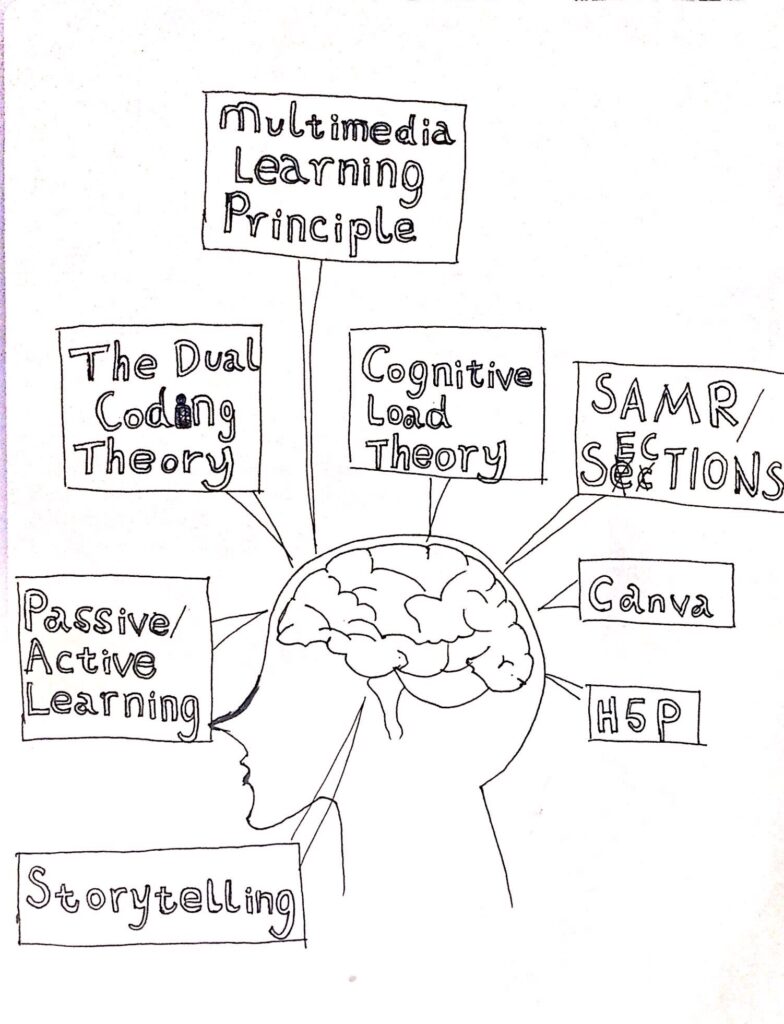When completing this Bad News Game, I found that this game follows the personalization principle. Because the story’s content is based on a question-and-answer mode, it is like a conversation between characters. Also, this game follows the feedback principle. When you choose the wrong options base on your characters, you will lose your followers. This game is very ironic. When players exaggerate certain news, they will get more followers and higher credibility. However, when players choose some daily news, the feedback is boring and losing followers. When news media’s credibility is not true credibility, this is why we need to think critically about the news. In the end, this game also follows the Segmenting principle and Pre-training Principle, because players play the game steps by steps, and they will know the names and characteristics of the main concepts. In my opinion, this game does follow the signalling principle. The game could highlight the keywords as an improvement.

The below is my sketch note, this sketch note only shows the main part of this course. In my opinion, sketchnoting follows the self-explanation principle. This because people can learn better and deep thinking or summarize when they create the sketchnoting.

Sketchnoting can be helpful to students. Students can make sketchnoting as a weekly study summary or study plan before the semester. This will be fun when study feels boring studying. Also, Sketchnoting does not need high drawing skills.
There are some active learning methods are we using in EDCI 337:
Blog post: we need to think about the topic and create relative content.
Creating Twine stories: creating a twine story and highlight keywords can show some multimedia learning principles.
Creating interactive videos: creating some questions are related to the video.
Creating Powerpoint: creating PowerPoint can show some multimedia learning principles.







